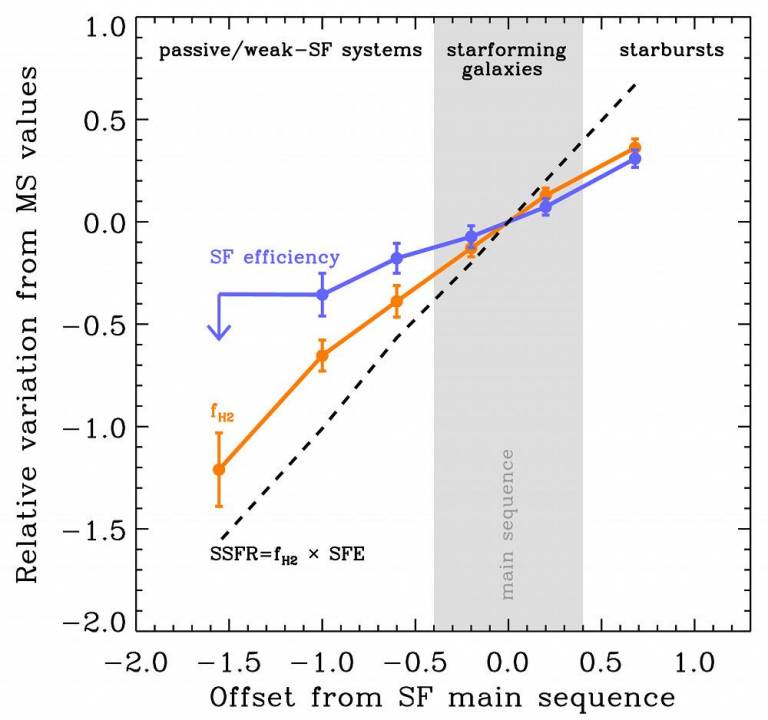Over the past five years, there has been a significant shift in our general picture for galaxy evolution. A combination of large imaging surveys, detailed kinematics studies, molecular gas measurements, and theoretical efforts have shown that galaxies live in a state of equilibrium where their ability to form stars is regulated by the availability of gas and the prevalence of outflows rather than by a succession of minor and major mergers (e.g. Dave et al. 2012; Lilly et al. 2013; Tacconi et al. 2013; Saintonge et al. 2013). In particular, the observation that high redshift star-forming galaxies are mostly rotating discs owing their very high SFRs not to merger-induced starbursts but to large gas masses was game-changing (Tacconi et al. 2010). It has brought the study of gas in galaxies at the forefront of state-of-the-art galaxy evolution research.

Figure 1: Examples of galaxies in the COLD GASS survey (top row: SDSS images, bottom row: IRAM CO(1-0) spectra). The sample is complete and representative of the local galaxy population, and therefore includes everything from passive ellipticals, to star-forming spirals, to interacting systems.
In particular, we are advocating the use of molecular gas observations in large, complete samples of normal galaxies (rather than bright and exotic starburst galaxies), as a way to derive scaling relation between the gaseous, stellar, structural and chemical properties of galaxies. These can be used to constrain different models of galaxy formation, and test the importance of different evolutionary mechanisms. For example, the COLD GASS survey (http://www.mpa-garching.mpg.de/COLD_GASS/ - Saintonge et al. 2011a,b, 2012) is now the z = 0 benchmark reference for both modeling and observational work (e.g. Lagos et al. 2011; Krumholz & Dekel 2012; Popping et al. 2012; Tacconi et al. 2013)

Figure 2: The specific rate of star formation in galaxies is determined by variations in both molecular gas contents and the efficiency to convert this gas into stars. Only with a complete, homogeneous and unbiased sample like COLD GASS can such an analysis be performed successfully.
Such a large galaxy survey, including molecular gas observations, has been used for example to show that there are variations in star formation efficiency across the local galaxy population (Saintonge et al. 2011b), to anchor studies of the redshift evolution of the gas contents of galaxies (Tacconi et al. 2013, Saintonge et al. 2013), and to show how galaxies populate the SFR-stellar mass plane (Saintonge et al. 2012).
We are currently conducting a follow-up survey to the original COLD GASS, now targeting intermediate mass galaxies with 9.0<log(M*)<10.0. This is a very interesting mass regime, where metallicities are low, and the mass budget of most galaxies is dominated by cold gas rather than stars. All the molecular gas observations done at the IRAM observatory are accompanied by a rich multi-wavelength dataset from public SDSS/GALEX/WISE imaging as well as dedicated Arecibo, Herschel, NTT and APEX observations. Through this survey and follow-up observing campaigns, we will address such questions as "what is the role of outflows/inflows in shaping the mass-metallicity relation?", "how are gas and metals mixed in galaxies?", "do galaxies grow in different ways depending on their mass?", "why are low mass galaxies so gas-rich and inefficient at forming stars?"
For further information contact Dr. Amelie Saintonge (a.saintonge@ucl.ac.uk)
 Close
Close

